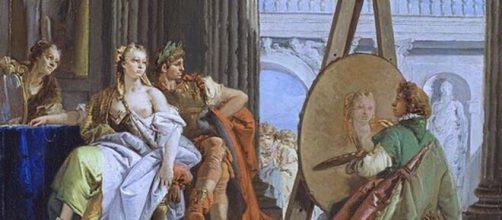Not all Old Master-art is masterful. And so, not all fusty, musty paintings found in attics, basements, or yard sales merit headlines.
In the attic
Consider the following ‘find” - Tiepolo’s Portrait of a Lady as Flora, (ancient goddess of flowers) said to be painted around 1760. It was found in an attic at a French chateau and sold in 2017 by Sotheby’s for $3.1 million. Artnet noted this story this month under a headline that called the work one of the “Greatest Long-Lost Art Historical Masterpieces That Were Found in Attics and Basements.”
Artnet went on to explain why Tiepolo’s picture is a treasure.
Ready for the answer? The painting is “thought” to be commissioned by Empress Elizabeth of Russia, although there’s no record she ever received it. All that’s known about her connection to this painting is that she died two years after it was painted.
What is known, says Artnet, is that this portrait is one of the few surviving Tiepolo paintings described by Sotheby’s as “a beautiful woman in fancy dress,” and an idealized female. As the auction house further notes on its website, this painting was “completely unknown and unrecorded” before its resurrection from the attic in France.
Why cast in storage?
I have no reason to doubt the authenticity of this painting, but the question that nags here is, if the work is so important, why was it stored in an attic in the first place?
According to Reuters, “its semi-naked subject was considered too risqué,” (More about that in a moment).
I can think of another reason for the portrait being relegated to storage: it’s just a bad painting. Of course, I also think Da Vinci’s Mona Lisa is a bad painting, so you might want to stop reading further.
French frou-frou
For those still with me, what you see in the Tiepolo portrait is a woman with a vacant look in her eyes – dull, even – bored, perhaps, certainly empty – with roses in her hair, holding roses and other flowers in her left arm. Half her gown is open to expose a breast. The portrait is said to be a likeness of anyone special.
It’s a fantasy out of Tiepolo’s imagination. The way he painted her, he paid more attention to her upper anatomy than her expression.
Sotheby’s, clearly not thrown by the empty eyes in the portrait, calls it “without doubt the most beautiful and important Tiepolo discovery of recent years.” But then again, auction houses are bent on selling, aren’t they?
Palace decorator
Given the time period the portrait was painted and the airy, flowery touches, it’s clear Tiepolo was influenced by the extravagant decorative Arts at Louis XIV’s Versailles. The soft pastels and pearl white skin in the portrait typify the palettes of interior decoration at the time. It’s also important to note that Tiepolo was a palace decorator by trade, known for adorning ceilings and walls with theatrical flair.
So, if you like vacuous-looking faces and bared breasts, Tiepolo’s Portrait of a Lady as Flora is a big find. The way I see it, the work should have stayed in the attic.


